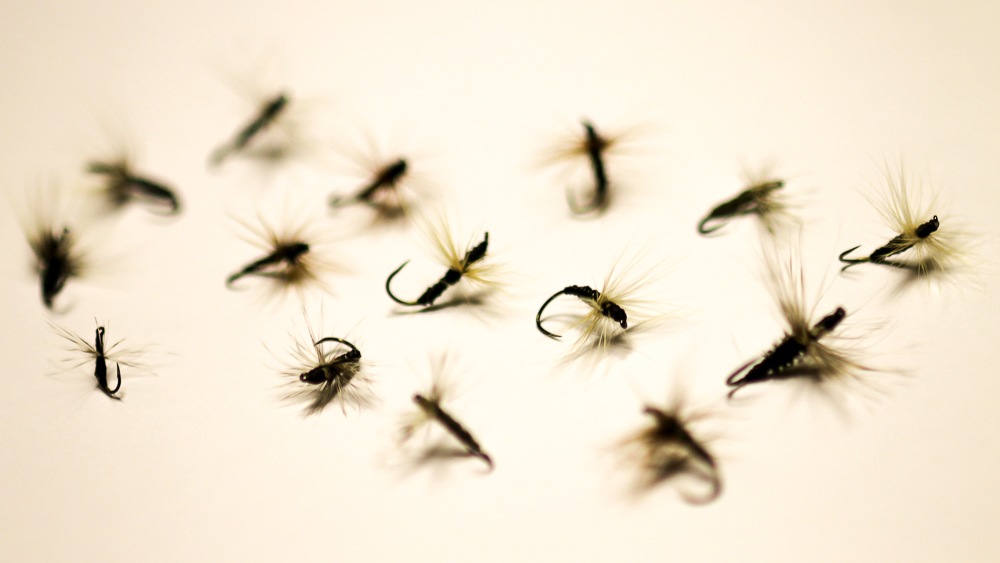
I had another (in an occasional but long-running series) great email conversation with David Walker over the last few days. David has an excellent ability to dig out unusual and interesting online tenkara information. Including the rather unusual title of this post…which is about Dr. Ishigaki’s kebari (and you can see a whole flock of those tied by Ishigaki-sensei himself in the picture above).
Anyway, we got chatting over the different hackle orientations as a result of JP’s recent blog on how Fujioka-san’s investigations over the years suggest that around 3 out of every 4 tenkara fly patterns do not have a reverse hackle.
As an interesting aside, in our conversations with Shoichi Saitou, he says that he has traced an initial spread and popularisation of reverse hackles from the Gifu region of Japan. The spread apparently maps onto the same dispersal pattern as the religion of the area (a form of Shinto that venerates Mount Hakusan, the “white mountain”, one of the 3 most holy mountains in Japanese religious culture along with Fujisan and Tateyama). These three sites of mountain worship are called the sanreizan 三霊山 and the religious worship of mountains is known as sangaku shinko 山岳信仰, but I’m getting off topic as usual!
The main point of my short story today was to relay a quick 3-way conversation I’d had with David and Dr. Ishigaki after David had turned up some unusual references online. The text, when translated from Japanese script, referred to Dr. Ishigaki’s famous kebari as “barcode stealth stress kebari” – which gives the sense of one of Dr. Ishigaki’s good-humoured jokes. Just not one that easily translates..
Because I was also curious to know the explanation, I contacted Dr. Ishigaki (not realising that David was about to do the same thing!). So I get two replies from Ishigaki-sensei a couple of days apart – the first one with the answer and the second one saying “I just got asked the same question again, have you been talking to David Walker by any chance? So I made a quick explanation…
I suspect that so many things that what we, as outsiders to Japan, find unusual and interesting is completely mundane to the Japanese – but I also think that works in reverse too.
Anyway, the brief explanation of the label for Dr. Ishigaki’s most famous kebari was a joke that Ishigaki-sensei had made when talking about his fly. I think that it translates as the “barcode” part meaning that the hackle is a bit uneven (I think) and the “stealth” part comes from the fact that he ties it in drab colours so it blends into the background and “stress” because he can never find his flies if he drops them because the “stealth” colours mean that they just blend in and disappear. So, basically a very nice and self-deprecating joke describing a hugely effective, fish-catching fly that works all over the world 🙂
I look forward to the next fascinating details that David unearths and wonder where that might take us…

Paul thank you for your help discovering the tale behind this nickname Dr Ishigaki picked for some of his kebari. A bit of trivia that also revealed something about Dr Ishigaki’s sense of humor. You do realize I will now have to submit your name to become an honorary member of the Keepers of Odd Knowledge Society. 😉 otoh, during the next two weeks I plan to put your more practical advice, the Ashtapa technique to the test. I’m expecting to find it’s very effective.